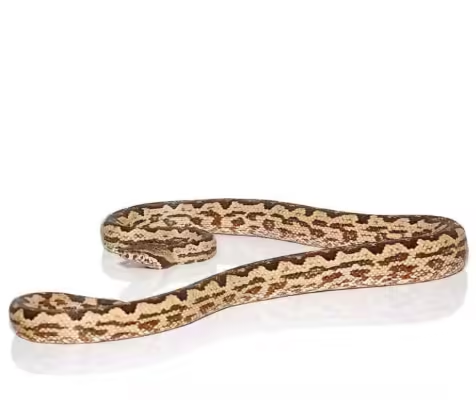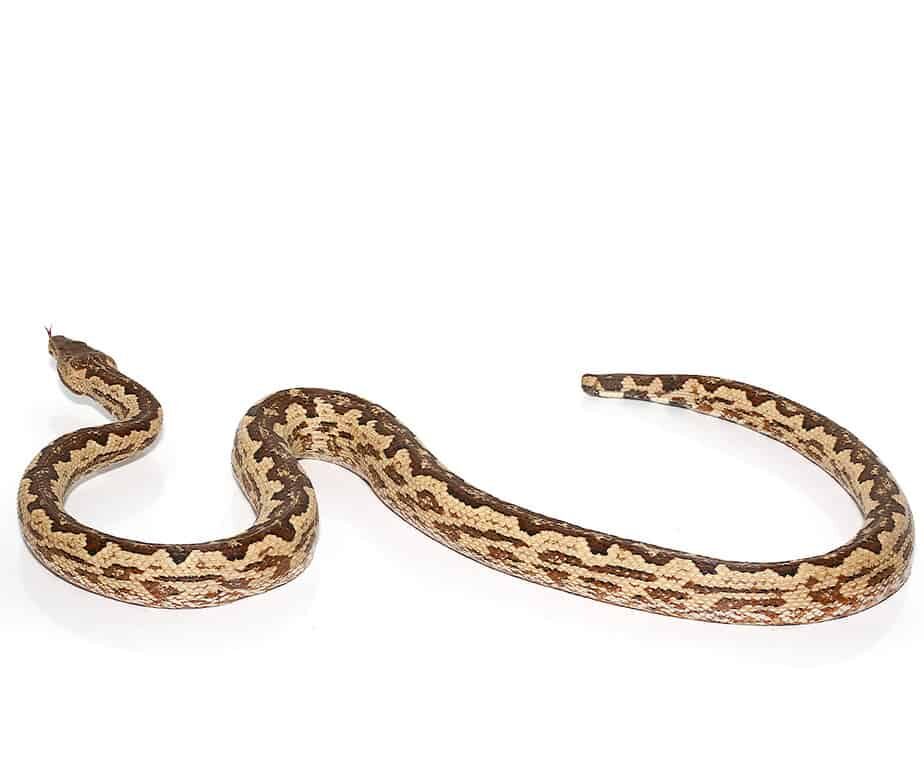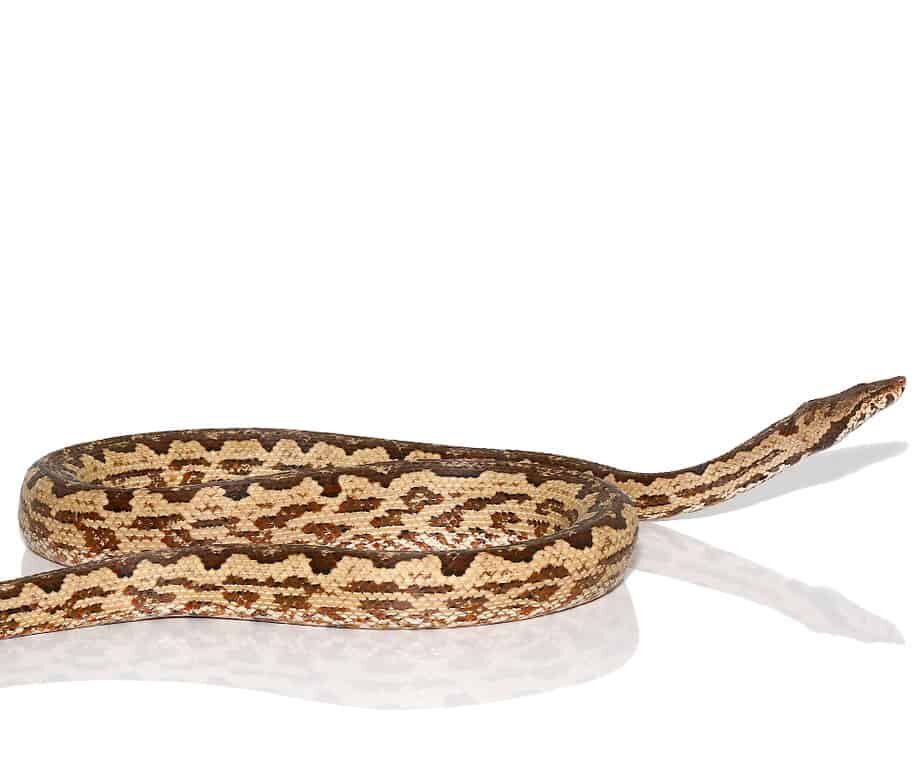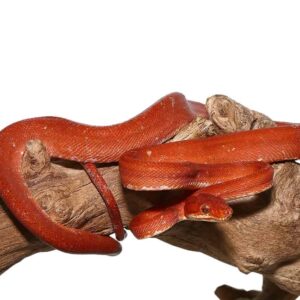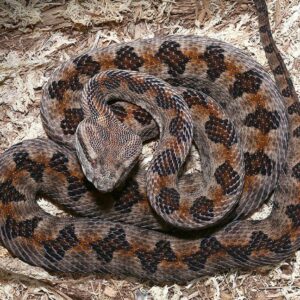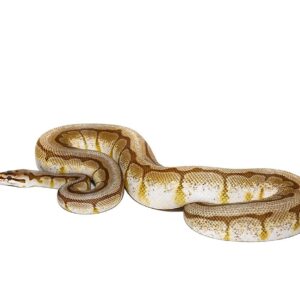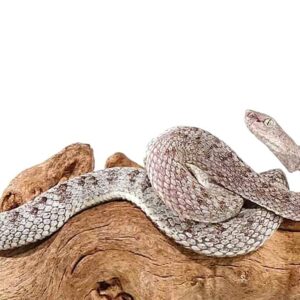White San Isabel Island Ground Boa For Sale
$799.99
WE HAVE ADULT WHITE SAN ISABEL ISLAND GROUND BOA FOR SALE. HERE ARE SOME HIGHLIGHTS:
- Candoia carinata paulsoni
- Field Collected
- Female
- Approximately 32 Inches In Length From Head To Tail
- Gorgeous Full Dorsal Stripe And Beautiful Coloration
- This Species Typically Feeds On Anoles And Geckos But They Can Be Converted To Rodents
- Originating Out Of The Solomon Islands
- With Proper Care These Can Live 15+ Years In Captivity
- Adults Will Reach Sizes Of 3 – 4 Feet In Length From Head To Tail
- These Boas Will Thrive Best In Enclosures With Higher Humidity, Temperatures Ranging From 78 – 82 Degrees
Description
The White San Isabel Island Ground Boa, scientifically known as Boa constrictor imperator, is a remarkable reptile that captivates enthusiasts and researchers alike. This ground-dwelling boa is distinguished by its unique coloration and striking appearance. Unlike the typical brown or gray hues common to many boa species, the White San Isabel Island Ground Boa boasts a predominantly white or pale cream body, often adorned with subtle patterns of light brown or gray. This distinctive coloration not only sets it apart visually but also provides an adaptive advantage in its natural environment.
One of the most notable features of this boa is its relatively small size compared to other boa constrictor subspecies. Adults typically reach lengths of 4 to 6 feet, making them more manageable for both naturalists and hobbyists. Its head is broad and slightly triangular, with eyes that exhibit a keen sense of perception, crucial for its predatory lifestyle. The boa’s scales are smooth and glossy, further enhancing its unique appearance.
The natural habitat of the White San Isabel Island Ground Boa is restricted to San Isabel Island, part of the Galápagos archipelago. This limited geographical range contributes to its rarity and allure. The island’s diverse environment, characterized by arid scrublands and rocky terrains, plays a crucial role in the boa’s ecological niche. Here, it thrives in a habitat that provides ample hiding spots and a variety of prey, including small mammals, birds, and reptiles.
What makes the White San Isabel Island Ground Boa particularly intriguing is its adaptability to the island’s microhabitats. It exhibits behaviors and physical traits that have evolved specifically to navigate the unique challenges of its environment. This adaptability underscores the importance of preserving its natural habitat, as any changes could have significant impacts on its survival.
Habitat and Distribution
The White San Isabel Island Ground Boa, an intriguing species distinguished by its unique coloration and limited distribution, is found exclusively on San Isabel Island. This island, located in the Pacific Ocean, provides a distinctive environment that supports the boa’s survival and proliferation. The climate of San Isabel Island is predominantly tropical, characterized by consistent temperatures and high humidity levels throughout the year. These stable climatic conditions create an ideal habitat for the White San Isabel Island Ground Boa, which thrives in warm, moist environments.
Vegetation on San Isabel Island is diverse, encompassing dense tropical forests, shrublands, and coastal regions. The boa predominantly inhabits the humid, forested areas where it can find ample cover and a steady supply of prey. The dense foliage and rich undergrowth of these forests offer the perfect environment for the boa to camouflage and hunt effectively. Additionally, the terrain of San Isabel Island, which features a combination of flatlands and gentle slopes, further aids in the boa’s concealment and mobility.
Over the years, the habitat of the White San Isabel Island Ground Boa has undergone significant changes due to various factors, including deforestation, human encroachment, and climatic variations. These changes have led to a reduction in the available natural habitat, posing a threat to the species’ survival. Efforts to conserve the White San Isabel Island Ground Boa have been implemented, focusing on habitat preservation and restoration. Despite these efforts, the boa remains classified as a species of concern, necessitating ongoing attention to ensure its continued existence.
The conservation status of the White San Isabel Island Ground Boa highlights the delicate balance required to maintain its habitat. Protecting the tropical forests and mitigating the impact of human activities are crucial steps in preserving this unique species. By understanding the specific environmental needs and distribution of the boa, conservationists can better formulate strategies to support its survival on San Isabel Island.
The White San Isabel Island Ground Boa is a strikingly unique reptile, distinguished by its physical characteristics that serve as critical adaptations for survival in its natural environment. This species typically measures between 3 to 5 feet in length, with females generally being larger than males. The boa’s most notable feature is its exquisite coloration, predominantly a pale, creamy white that provides excellent camouflage against the sandy and rocky terrains of San Isabel Island.
A closer examination reveals a subtle pattern of darker spots and occasional bands along its body, which blend seamlessly with the surrounding environment, offering an additional layer of concealment from predators and prey alike. These patterns can vary significantly among individuals, with some boas exhibiting more pronounced markings while others display almost uniform coloration. This variability is believed to be an adaptive trait, enhancing the species’ overall survival by reducing the likelihood of detection.
The boa’s scales are smooth and glossy, contributing to its sleek appearance. This texture not only aids in reducing friction as the snake moves through its habitat but also helps in temperature regulation, an essential function in the often harsh island climate. The head of the White San Isabel Island Ground Boa is slightly broader than its neck, with eyes positioned to provide a wide field of vision, crucial for spotting both predators and potential prey.
Unique physical traits such as a prehensile tail allow the boa to anchor itself in the rocky crevices and dense foliage of its habitat, providing stability and aiding in hunting. Variations within the species, particularly in coloration and pattern, highlight the adaptability of this ground boa to its environment. These physical characteristics not only define the White San Isabel Island Ground Boa but also underscore the intricate relationship between an organism and its habitat, reflecting the evolutionary pressures that shape and sustain this remarkable species.
Behavior and Diet
The White San Isabel Island Ground Boa exhibits a range of intriguing behaviors that distinguish it from other snake species. Primarily nocturnal, this ground boa is most active during the night, utilizing the cover of darkness to hunt and avoid predators. Its hunting methods are highly specialized; the boa employs a sit-and-wait strategy, remaining motionless to ambush unsuspecting prey. This hunting style is particularly effective in the dense underbrush and rocky terrains of San Isabel Island, where its white coloration provides natural camouflage against the limestone rocks.
Regarding its diet, the White San Isabel Island Ground Boa primarily preys on small mammals, birds, and occasionally, other reptiles. Small mammals like rodents are a staple in its diet, providing the necessary nutrients for the boa’s growth and energy requirements. This ground boa’s hunting strategy involves both constriction and envenomation, ensuring the swift capture and immobilization of its prey. The boa’s keen sense of smell and heat-sensing pits enable it to detect warm-blooded prey even in the dark.
Seasonal variations and environmental changes can significantly influence the diet of the White San Isabel Island Ground Boa. During the wet season, when prey is more abundant, the boa may have access to a variety of food sources, including amphibians that become more active with increased rainfall. Conversely, in the dry season, the availability of prey may decrease, leading the boa to adapt by expanding its diet to include less preferred food sources. This adaptability in diet is crucial for its survival in the fluctuating environmental conditions of San Isabel Island.
Social behaviors of the White San Isabel Island Ground Boa are relatively minimal, as these snakes are generally solitary except during the breeding season. During this period, males may exhibit increased activity as they search for potential mates, often leading to encounters with other males and occasional combat. However, outside of this time, the boa’s interactions with other individuals are limited, emphasizing its solitary nature.
Reproduction and Life Cycle
The reproductive habits of the White San Isabel Island Ground Boa are both intriguing and unique, reflecting the distinct ecological niche this species occupies. The mating season for these ground boas typically occurs during the cooler months, from May to July, when environmental conditions are most favorable. During this period, males engage in competitive behaviors to secure mating opportunities, often involving physical displays and combat rituals.
Once mating is successful, the gestation period for the White San Isabel Island Ground Boa lasts approximately six to eight months. This extended gestation is indicative of the species’ adaptation to its specific habitat, ensuring that offspring are born during periods of optimal resources. Females give birth to live young, a reproductive strategy known as viviparity, which is relatively common among boas. Litter sizes can vary, but typically, a female will give birth to a small brood of three to five neonates.
From birth, the neonates are equipped with the necessary skills to survive independently. The life cycle of the White San Isabel Island Ground Boa from birth to adulthood involves several key developmental milestones. Initially, the young boas experience rapid growth rates, doubling their size within the first year. This growth is supported by a high metabolism and a diet consisting mainly of small mammals and birds.
As they mature, the growth rate of these boas slows, and they continue to develop until reaching sexual maturity at around three to four years of age. One of the unique aspects of their developmental process is the minimal parental care exhibited. Unlike some other reptilian species, the White San Isabel Island Ground Boa does not exhibit extensive parental investment post-birth. Neonates are left to fend for themselves shortly after birth, relying on their innate instincts and physical capabilities.
Overall, the reproductive and life cycle traits of the White San Isabel Island Ground Boa are finely tuned to the environmental conditions of San Isabel Island, ensuring the species’ continued survival and adaptation within its unique ecosystem.
Conservation Status and Threats
The White San Isabel Island Ground Boa is currently listed as an endangered species, primarily due to its restricted habitat and the mounting pressures on its survival. As an endemic species, the ground boa’s population is confined to the unique ecosystem of San Isabel Island, making it particularly vulnerable to environmental changes and human activities. One of the most significant threats to the White San Isabel Island Ground Boa is habitat destruction. Expanding agricultural activities, urban development, and deforestation have led to the fragmentation of its natural habitat, severely limiting the areas where the boa can thrive.
Climate change further exacerbates these challenges. Altered weather patterns and rising temperatures disrupt the delicate balance of the island’s ecosystem, impacting the availability of prey and suitable habitat for the ground boa. Additionally, the increasing frequency of extreme weather events, such as hurricanes and droughts, poses a direct threat to the species’ survival. Human activities, including illegal pet trade and direct persecution, also contribute to the decline in the population of the White San Isabel Island Ground Boa. These activities not only reduce the number of individuals but also disturb the natural behavior and breeding patterns of the species.
In response to these threats, several conservation efforts have been initiated to protect the White San Isabel Island Ground Boa. Conservation organizations, in collaboration with local authorities, have implemented habitat restoration projects aimed at preserving and expanding the natural environments where the ground boa lives. Protected areas have been established to safeguard critical habitats from further destruction. Additionally, educational programs have been launched to raise awareness about the importance of conserving this unique species and to discourage illegal activities that harm the ground boa.
Captive breeding programs are also being developed to bolster the population numbers and ensure genetic diversity. By reintroducing captive-bred individuals into their natural habitats, these programs aim to enhance the chances of long-term survival for the White San Isabel Island Ground Boa. The combined efforts of habitat protection, public education, and breeding initiatives are crucial steps towards securing a future for this endangered species.
Human Interaction and Cultural Significance
The White San Isabel Island Ground Boa holds a unique place in the cultural fabric of the local communities inhabiting the region. Known for its distinctive coloration and elusive nature, this species has been both revered and feared in various local traditions. Some indigenous groups regard the boa as a symbol of wisdom and resilience, often featuring it in folklore and ceremonial practices. The snake’s rarity and striking appearance have led to its depiction in local art, crafts, and storytelling, reinforcing its cultural significance.
Human activities have had a profound impact on the White San Isabel Island Ground Boa, both positively and negatively. On the positive side, conservation efforts initiated by local and international organizations have raised awareness about the species’ ecological importance. Educational programs in schools and community centers aim to foster a sense of stewardship towards this unique reptile, promoting habitat preservation and discouraging harmful practices.
Conversely, the species faces several threats due to human encroachment and environmental changes. Deforestation and land development have led to habitat loss, pushing the ground boa into increasingly fragmented and isolated areas. Agricultural expansion and pesticide use further exacerbate the problem, reducing prey availability and contaminating the boa’s natural habitat. Additionally, the illegal pet trade poses a significant threat, as the White San Isabel Island Ground Boa is often targeted for its exotic appearance.
Efforts to mitigate these negative impacts are ongoing. Local governments and NGOs are collaborating to implement stricter regulations on land use and wildlife trade. Protected areas have been established to safeguard critical habitats, and reforestation projects aim to restore and connect fragmented landscapes. By integrating traditional knowledge with modern conservation strategies, there is hope for a sustainable coexistence between humans and the White San Isabel Island Ground Boa.
Future Outlook and Research
The future of the White San Isabel Island Ground Boa is intrinsically tied to ongoing and potential research efforts, which are crucial for understanding and preserving this unique species. Current studies have shed light on the boa’s habitat preferences, reproductive behaviors, and dietary needs, but much remains to be discovered. The continuous exploration of these aspects will provide a more comprehensive understanding of the species, enabling better conservation strategies.
Emerging research is focusing on the genetic diversity within the population of White San Isabel Island Ground Boas. Genetic studies are essential in identifying any potential inbreeding issues and ensuring the long-term viability of the population. Additionally, researchers are employing advanced tracking technologies to monitor the movement patterns and habitat use of these boas. Such data is invaluable for developing effective habitat management plans that cater to the specific needs of the species.
Furthermore, the potential impacts of climate change on the White San Isabel Island Ground Boa are a key area of concern. Researchers are investigating how rising temperatures and changing precipitation patterns might affect the boa’s habitat and food availability. Understanding these impacts will help in devising adaptive conservation measures to mitigate potential threats.
New discoveries related to the White San Isabel Island Ground Boa, such as previously unknown behaviors or physiological adaptations, continue to emerge, highlighting the importance of sustained research. These findings not only enrich our knowledge of the species but also underscore the critical need for ongoing scientific inquiry.
The importance of continued research and conservation efforts cannot be overstated. By prioritizing the study of the White San Isabel Island Ground Boa, scientists and conservationists can develop informed strategies to protect this unique species from extinction. Collaboration between researchers, local communities, and conservation organizations will be pivotal in ensuring that the White San Isabel Island Ground Boa thrives for generations to come.
